From the Vampir to the Fire Lilly to the Sun Gun, these outlandish Nazi weapons would have been devastating if they'd ever seen much action.
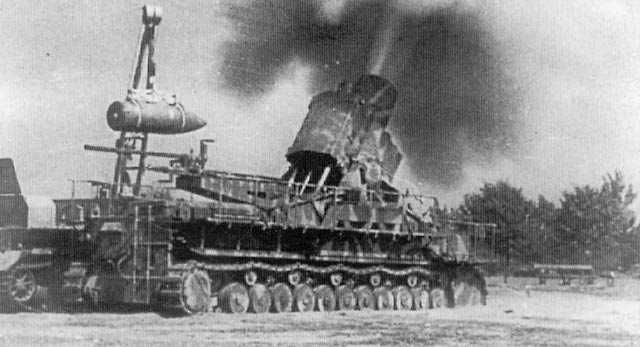
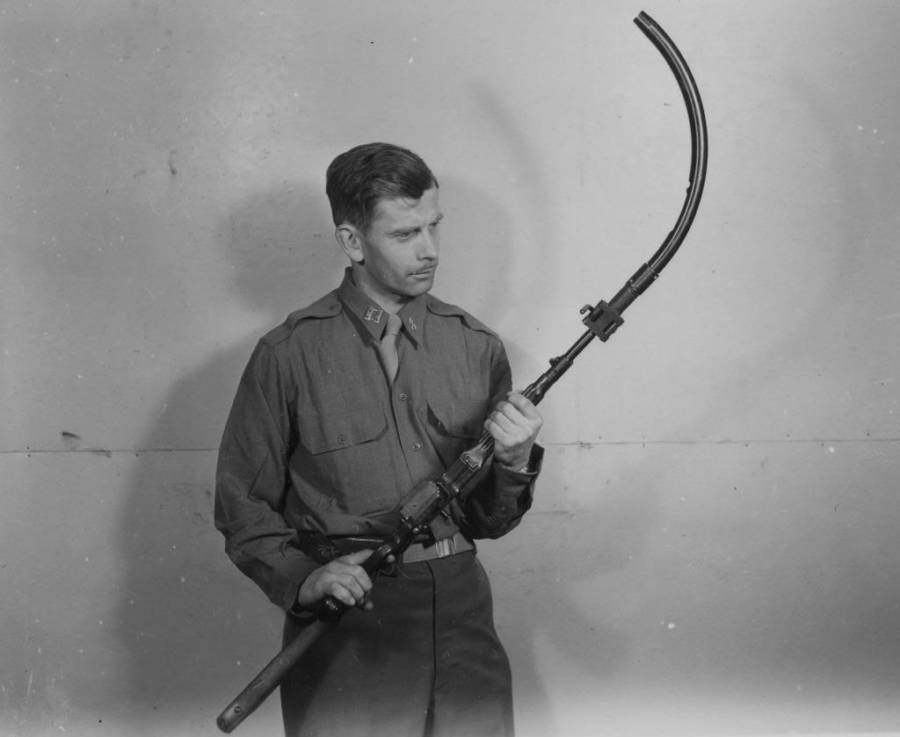
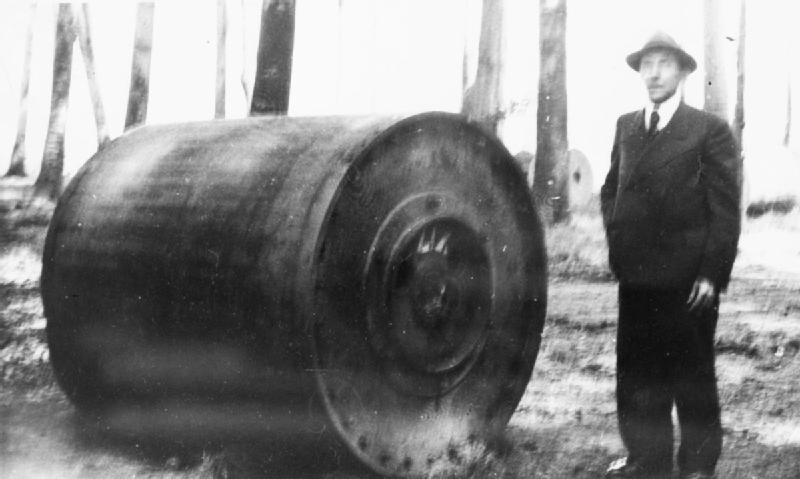
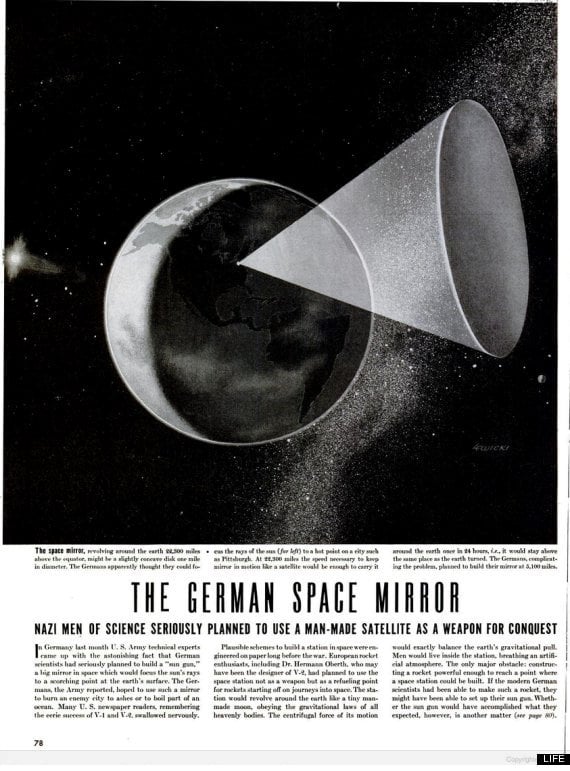
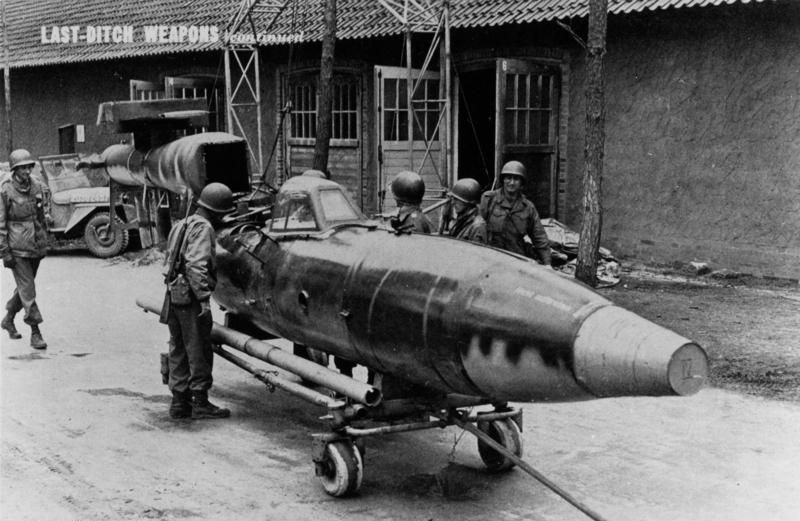
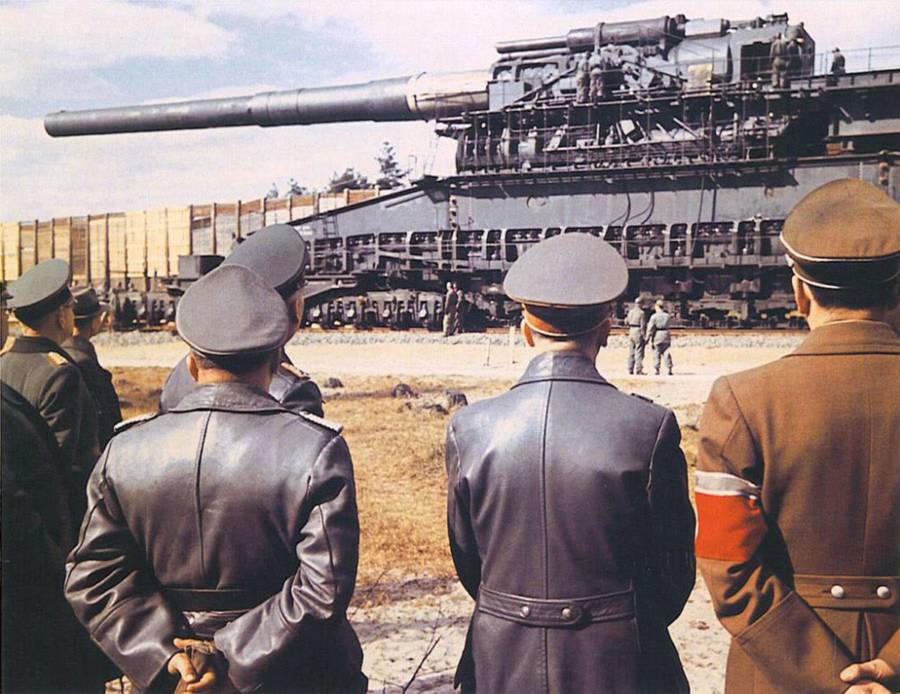


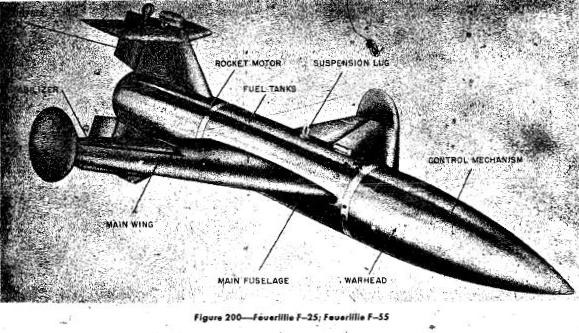





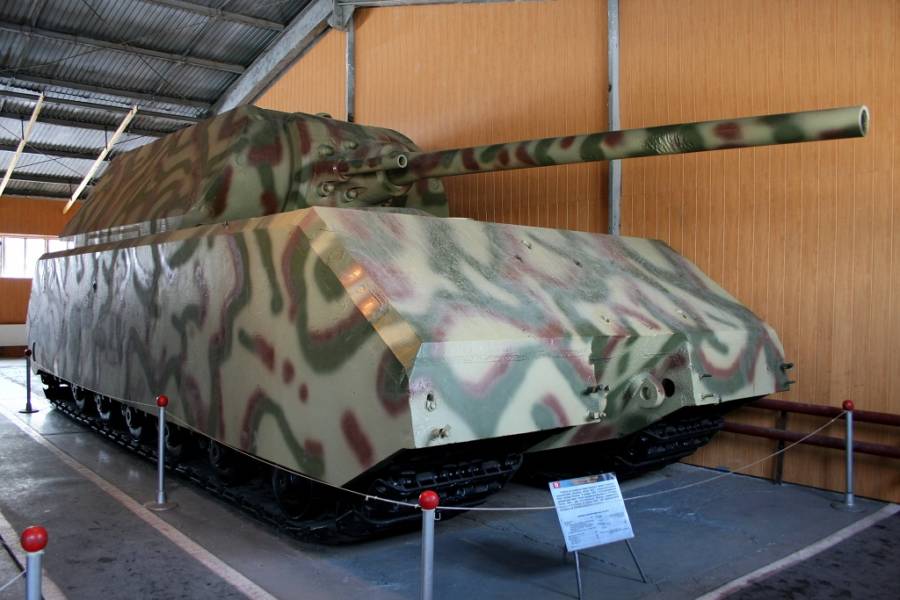

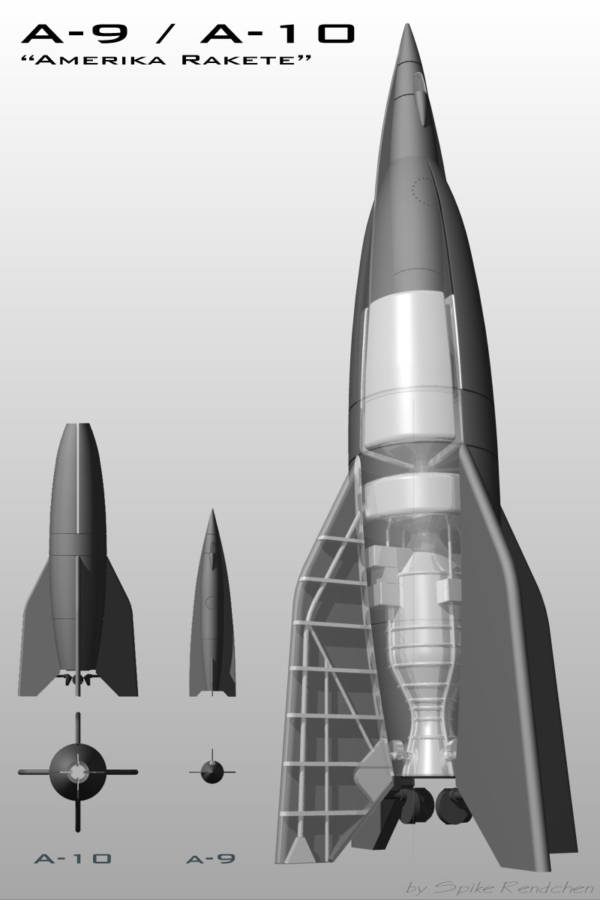
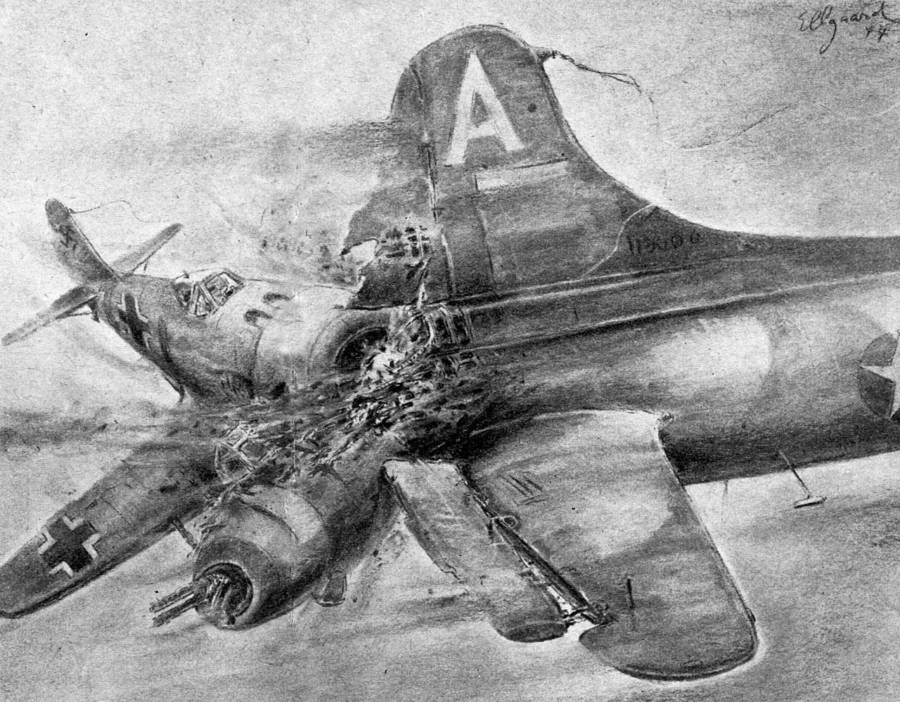





And if you liked this post, be sure to check out these popular posts:
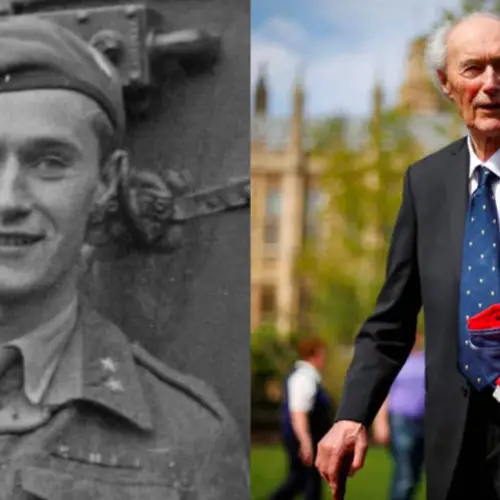
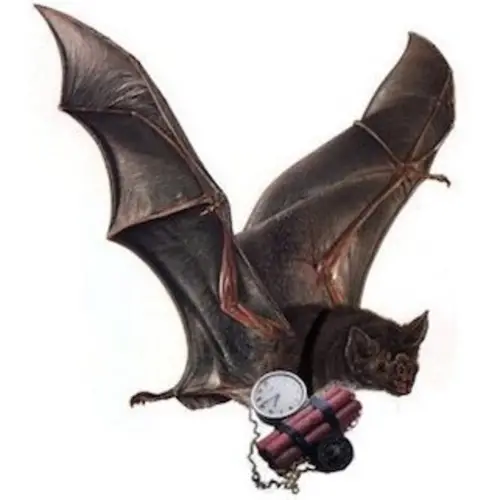

Thor
The gargantuan weapon (it was the size of a blue whale and could fire shells the size of a rhinoceros) actually saw some combat. In fact, the six production models were completed as early as 1941. Thereafter, these guns saw action in several battles, including the Warsaw Uprising and the Battle of the Bulge.
Nevertheless, the guns' immense size limited their capabilities (and contributed to their propensity to be sidelined for repairs) and when the Americans and Soviets took Germany in 1945, the guns were destroyed. Wikimedia Commons
The Curved Rifle
And just as obvious as the weapon's uses were its problems. The curve sent bullets crashing into the sides of the barrels, causing both bullet and barrel to break apart. Bullets often fragmented into a kind of unintentional shotgun blast while barrels could only withstand the pounding for a few hundred shots before giving out.
Ultimately, only the model with the slightest curve (30 degrees) was produced in any sizable numbers, and not much at that. More ambitious models -- including a 90-degree one as well as a one for tanks -- never truly made it off the ground.Public Domain
The Bouncing Bomb
Having the bomb bounce along the surface of the water allowed it to evade anti-torpedo devices waiting for such a device below. And while the Nazis indeed developed a bouncing bomb of just that sort, the original invention actually comes from the British.
The Royal Air Force finalized their bouncing bomb in 1943 and used it successfully against German dams that May. However, one RAF plane crashed over Germany with its bouncing bomb still intact (pictured). The Germans then took the bomb and began reverse engineering their own version. But thankfully for the Allies, they never got the spin and the motor quite right and ultimately abandoned the project.Wikimedia Commons
Sun Gun
With a name that left little mystery as to its workings, the massive Sun Gun would use the power of the sun to destroy large areas. The plan, based on ideas described by physicists decades before, was to launch a massive reflector made of metallic sodium more than 5,000 miles into space and have it focus the sun's energy on a given city in order to set it ablaze.
Of course, this project, being the most ambitious and devastating, was also the least realistic. German scientists did indeed go to work on the project, but after questioning from invading American authorities, estimated that they'd need at least 50 to 100 years to complete it — time they didn't have during WW2.LIFE
Manned Bombs
This, of course, allowed for greater accuracy and the Nazis thus went into production and even conducted test flights. Finally, however, some of Hitler's military advisors eventually convinced him that suicide missions weren't part of the German warrior tradition and they cast the project aside in early 1945.Wikimedia Commons
The Largest Artillery Cannon Ever Built
And what's truly scary is that this was a Nazi superweapon that actually saw action. Developed back in the late 1930s to blast through French fortifications, it was in fact battlefield-ready starting in 1941.
However, France's quick surrender obviated the need for the Great Gustav, which then only saw limited use on the eastern front against the Soviets before war's end.manhhai/Flickr
The Largest Artillery Cannon Ever Built (continued)
Ultimately, both Dora and the Great Gustav were destroyed in 1945, the latter by the Americans and the former by the Nazis themselves in order to keep it out of the hands of the approaching Soviets.Wikimedia Commons
Monster
It was called the Landkreuzer P. 1500 Monster, and truly, no other name would do. With a proposed weight equal to that of about 200 elephants (and the ability to launch shells weighing as much as one elephant), this land cruiser would have been far and away the largest armored vehicle the world had ever seen.
Undeterred by the scale of the Monster, the German Ministry of Armaments offered up the plans in 1942. However, by the following year, the Nazis recognized the difficulties they'd encounter in terms of transport and propulsion, and cancelled the project.
The Allies can surely count themselves lucky. Some of the larger Nazi railguns that actually did get into production (like the one pictured, captured by US troops -- with 22 of them standing on the barrel -- in 1945) fired ammo less than a third of the size of that to be fired by the guns on the Monster.Wikimedia Commons
The Fire Lily
The missiles' flight stability never met acceptable standards and the Fire Lily never saw the battlefield.Wikimedia Commons
Busy Lizzie
And the location of the hill that the Nazis chose reveals why they needed a gun this large in the first place. The hill was in Pas-de-Calais, northern France, just over 100 miles from London -- and the enormous V-3 was the only gun that could shoot that distance. The plan was to bombard London with massive 310-pound shells at a rate of hundreds per hour.
But with a number of testing problems capped off by one gun that literally burst during testing, the project was shut down. Similar yet smaller Nazi guns did see action elsewhere, but the size of even those guns, combined with ammo shortages, rendered them largely ineffective.Wikimedia Commons
The Amerika Bomber
By 1942, the Nazis had a plan in place and began developing the small handful of planes that could make the trip across the sea, including the Junkers Ju 390 (pictured). A prototype of that plane took flight in late 1943, but the beleaguered Germany of 1944 wasn't able to mass produce them and the project fizzled out.
That said, some admittedly contested accounts (largely stemming from a mid-1950s report on Allied intelligence documents by aviation writer William Green) state that a Junkers Ju 390 did in fact complete a reconnaissance flight from Germany to New York in early 1944 and that the Allies kept it under wraps. Wikimedia Commons
The Amerika Bomber (continued)
But also like the 390, the 264 made it through the prototype phase only to ultimately die on the vine.Wikimedia Commons
Nuclear Weapons
In fact, nuclear fission -- the key process behind the world's first atomic weapons -- was originally the work of German scientist Otto Hahn in 1938. And immediately afterward, the Nazis, now with a head start over the other world powers, set about trying to weaponize this momentous discovery.
However, the Nazis sealed their own fate as their very reign pushed many of the academics needed for a project like this out of the country and wartime demands forced resources to be allocated elsewhere.
In the end, the Americans got to the bomb first and when Germany fell in 1945, both the Americans and the Soviets snatched up whatever personnel and materials they could related to the Nazis' nuclear project (pictured, with workers toiling in the nuclear reactor).Wikimedia Commons
The Ball Tank
The name translates as "ball tank," which certainly describes what it seems to be, and is also most of what we actually know about it. With no accompanying documentation and much of the insides stripped out when the Soviets found the one extant model at war's end, the kugelpanzer remains shrouded in mystery to this day.
Given its size and small motor, we can be pretty sure that it was an unprecedentedly light reconnaissance tank. Perhaps the Nazis didn't think it was up to the task, as they shipped it to the Japanese, who used it in Manchuria, where the Soviets ultimately found it.Wikimedia Commons
The Heaviest Tank Ever Built
However, only two models ever came close to completion before Soviet forces overran the testing facility. And the Allies can count themselves lucky that the Maus never saw action: Its immense size and equally immense gun made it capable of destroying any Allied vehicle then in existence -- from more than two miles away.Wikimedia Commons
Comet
That rocket power allowed the Comet, according to some accounts, to break the current air speed record by hitting 700 mph during a 1944 test flight. With performance like this, the comet could literally fly circles around the conventional jet-powered aircraft used by World War II's other armies.
But with a shortage of the special fuel needed for such a craft and the Nazi infrastructure then too tattered for such an ambitious project, the powers that be shut down production after only 370 or so were produced and shuffled resources elsewhere. Wikimedia Commons
The Amerikarakete
But the subsequent rockets in the series, never completed, were even more ambitious. And perhaps the most frightening of them all was the planned A9 Amerikarakete (and its A10 companion), a 66-foot-long rocket that would travel 2,700 miles per hour and be able to strike the eastern United States from Germany. Wikimedia Commons
The Aerial Rammer
This is precisely what the Zeppelin Rammer was designed to do. Using its steel-edged wings and special ramming nose, it would steer right for the wings and tails of Allied bombers and hop to bring them down while staying intact itself (which may or may not have actually been possible).
Such a weapon could have solved the Nazis' big problem, and an order for prototypes was placed in 1945. However, the Allies bombed the factory, destroyed the prototypes, and sent the project to the dustbin of history.Wikimedia Commons
Mammoth
And beyond its size, the Mammoth was remarkable in that it was made entirely of wood (so that other materials could be allocated elsewhere) yet could also carry at least 22,000 pounds, about one and a half times the weight of a T. rex.
Despite such a cargo load, the Mammoth actually made a fairly successful test flight in 1941. Ultimately, however, stabilization and landing problems forced the Nazis to drop the plans before production could ever begin.Luft Archiv
Vampir
A number of Vampirs were, in fact, put into use in the war's final stages. There are reports of snipers and even machine gunners using the device to their advantage. However, like so many other Nazi projects, this one gained steam late in the war and never had much of a chance to reach anything even close to its full potential.Wikimedia Commons
Dragon
In 1936, German engineer Heinrich Focke successfully launched the world's first functional and practical helicopter, the Focke-Wulf Fw 61. Three years later, he launched the prototype for a far larger, more ambitious model, the Fa 223 Dragon.
With then revolutionary top speeds of more than 100 miles per hour and a cargo capacity of more than 2,000 pounds, the Dragon looked to be an incredible advantage for the Nazis, whose helicopter advancements were head and shoulders above all others.
But with Allied bombing raids damaging factories and testing taking longer than Nazi leadership would have liked, they only managed to produce a few dozen Dragons that flew a handful of missions before the war ended.Wikimedia Commons
Fritz X
The Fritz X, however, used a radio-controlled guidance system that allowed the Nazis to steer the missile toward its target while in flight. Obviously, this was a tremendous advantage for the Nazis.
And the Fritz X did indeed prove useful in limited opportunities, mostly off the coast of Italy in 1943 and 1944, including a devastating hit on the USS Savannah (pictured).
Nevertheless, between quickly enacted electronic measures from the Allies and limited production capabilities, the Fritz X didn't quite live up to its pioneering potential.Wikimedia Commons
An Actual Death Ray
Nazi scientists worked toward turning these betatrons into x-ray beam generators and cannons that could disable aircraft engines and even kill pilots via blasts of radiation.
However, these "death rays" were never finalized before invading American forces captured the prototypes in April, 1945.Wikimedia Commons




Wunderwaffe. Even in the original German, the term (which translates to "wonder weapon") sounds positively pleasant. However, the terrifying yet often comedically ambitious weapons to which the Nazis applied this term during World War II were anything but.
From cannons to missiles to tanks, the Nazis dreamed up dozens upon dozens of weapons so outlandish, so potentially devastating that they could have come from no other group in history.
And history might have looked a lot different had the Nazis been able to actually complete these weapons, or at least reliably produce them on a large scale. But most of the time Hitler's reach far exceeded his grasp.
While these experimental wonder weapons saw little to no action, they remain fascinating what-ifs today. They're now artifacts of a time before nuclear weapons and military satellites and advanced computer circuitry, a time when guiding a missile to a target meant putting a man inside of it, a time when having the mightiest arsenal literally meant having the largest gun.
Although the Nazis didn't always succeed in having the largest gun -- literally and figuratively -- they certainly tried, and often came terrifyingly close.
From the Fire Lilly to the Vampir to the Sun Gun, above you'll find 23 of the most astounding Nazi weapons that, thankfully, never came to be.
Intrigued by this look at Nazi weapons? Next, find out what some of the most horrifying Nazi research contributed to medical science. Then, read up on four of the most devastating moments of the Nazis' reign.





